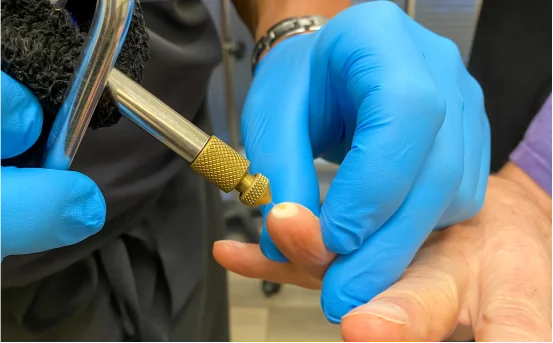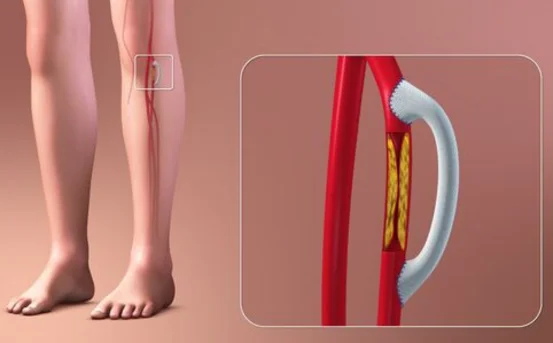Vagus nerve stimulation (VNS) is an innovative and evolving treatment technique that targets the vagus nerve one of the most important nerves in the human body. Often referred to as the “wandering nerve,” the vagus nerve plays a crucial role in regulating key bodily functions such as heart rate, digestion, mood, and immune response. Stimulating this nerve has shown promising therapeutic effects in managing several medical and psychiatric conditions. Over the years, various types of vagus nerve stimulation have been developed, each offering different benefits based on the condition being treated.
Vagus nerve stimulation is a form of neuromodulation that uses mild electrical impulses to stimulate the vagus nerve. These impulses can positively affect brain activity and communication between the nervous system and various organs. Originally developed as a treatment for epilepsy in patients who didn’t respond well to medications, VNS has since expanded to include applications in treatment-resistant depression, chronic pain, anxiety disorders, inflammation-related diseases, and more.
What Is Vagus Nerve Stimulation?
Vagus nerve stimulation is a medical technique that involves sending mild electrical impulses to the vagus nerve. These signals help modulate abnormal brain activity and improve communication between the brain and the body. VNS was initially approved for treating drug-resistant epilepsy but has since expanded to treat conditions like depression, anxiety, chronic pain, and even inflammatory diseases.
There are multiple ways to stimulate the vagus nerve both invasive and non-invasive. The type of VNS used often depends on the medical condition, severity of symptoms, and the patient’s response to other treatments.
Types of Vagus Nerve Stimulation
-
Implantable VNS Device (Traditional VNS) :- This is the most well-known form of vagus nerve stimulation and involves a surgically implanted device. The procedure includes placing a small pulse generator (similar to a pacemaker) under the skin of the chest. A wire connects the device to the left vagus nerve in the neck. The generator sends timed electrical impulses to the nerve, which then transmits signals to the brain.
Implantable VNS is FDA-approved for treating epilepsy and treatment-resistant depression. It is usually considered when medications fail to provide adequate symptom control. Although effective, this method requires surgery, regular monitoring, and occasional battery replacements, making it less suitable for some patients.
Benefits :-
-
Long-term, continuous stimulation
-
Effective for chronic neurological and psychiatric disorders
-
Reduces seizure frequency and severity
-
May improve mood and cognition over time
-
-
Transcutaneous Auricular VNS (taVNS) :- Transcutaneous auricular vagus nerve stimulation (taVNS) targets the auricular branch of the vagus nerve located in the outer ear. A small electrode is attached to the ear, and electrical pulses are delivered using a portable stimulator. This method is completely non-invasive, and the device can be used at home with proper guidance from a healthcare provider.
taVNS is currently being researched for various conditions, including anxiety disorders, depression, tinnitus, and even migraine. Since the ear provides direct access to the vagus nerve, it offers an efficient route for neuromodulation without surgical intervention.
Benefits :-
-
No need for surgery
-
Portable and easy to use at home
-
Minimal side effects
-
Useful for mental health and pain management
-
-
Transcutaneous Cervical VNS (tcVNS) :- Transcutaneous cervical vagus nerve stimulation (tcVNS) involves applying electrical stimulation to the vagus nerve through the skin of the neck. The device, often resembling a handheld wand or headset, is placed on the neck where the vagus nerve runs close to the surface. Pulses are delivered for a few minutes, depending on the treatment protocol.
tcVNS has been explored for conditions like PTSD, cluster headaches, fibromyalgia, and atrial fibrillation. Because the stimulation mimics the effects of implantable VNS, it provides therapeutic benefits without surgical risks.
Benefits :-
-
Convenient and non-invasive
-
Can be self-administered
-
Provides rapid relief for certain conditions like headaches or panic attacks
-
Lower cost compared to implantable VNS
-
-
Electrical VNS with Wearable Devices :- With the growth of wearable health tech, newer forms of VNS are being developed using wearable devices that integrate neuromodulation into everyday life. These devices are designed to monitor biometric signals and deliver stimulation in real-time based on stress levels, heart rate variability, or sleep patterns. Although still under development and regulatory approval, they represent the future of personalized neuromodulation.
Such devices may be integrated into smart headbands, neckbands, or even earphones. They aim to offer preventive care and real-time stress management, especially for users dealing with anxiety, insomnia, or high-performance stress.
Conditions Treated with Vagus Nerve Stimulation
Regardless of the type of stimulation used, VNS is being increasingly recognized for its therapeutic role in a broad range of health conditions. Some of the most studied include :-
-
Epilepsy :- Particularly for people with drug-resistant epilepsy
-
Depression :- Especially treatment-resistant depression
-
Anxiety Disorders :- Including PTSD and generalized anxiety disorder
-
Chronic Pain :- Such as fibromyalgia and cluster headaches
-
Inflammatory Conditions :- Including rheumatoid arthritis and Crohn’s disease
-
Migrain:- Non invasive VNS is often used for acute and preventive migraine treatment
Safety and Side Effects
The safety profile of VNS depends on the method used. Implantable VNS may cause side effects like hoarseness, coughing, or throat pain due to the direct nerve stimulation. Surgery related complications, though rare, can occur.
Non-invasive VNS is generally well tolerated with minimal risks. Some users may experience mild tingling, skin irritation, or dizziness, but these are usually temporary.
It is important to consult a medical professional before starting VNS therapy to ensure it is appropriate for your specific condition.
Conclusion
Vagus nerve stimulation offers a powerful and promising solution for many chronic conditions where traditional treatments may fall short. Whether through an implantable device or non-invasive home use technology, VNS helps regulate key physiological functions by leveraging the body’s own nervous system.























